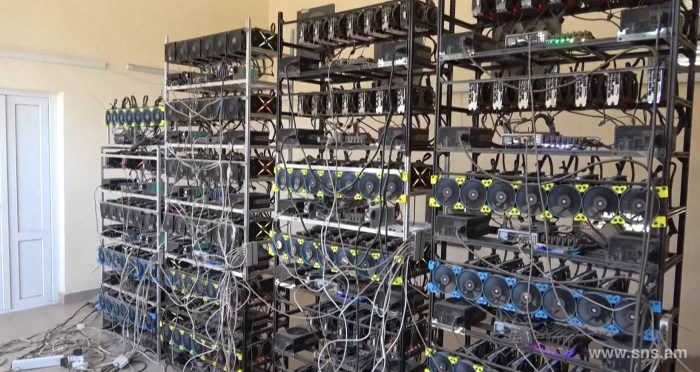With crypto mining techniques at the forefront, get ready to dive into the world of mining like never before. From the basics to the cutting-edge trends, this journey will keep you hooked till the end.
Overview of Crypto Mining Techniques
Crypto mining techniques refer to the process of validating transactions on a blockchain network using computational power. Miners solve complex mathematical problems to add new blocks to the blockchain, securing the network and earning rewards in the form of cryptocurrencies.
Mining plays a crucial role in the cryptocurrency ecosystem by maintaining the integrity and security of decentralized networks. It ensures that transactions are legitimate and that no single entity can control the entire network. Additionally, mining helps to distribute new coins and incentivize participants to contribute to the network’s operation.
Popular Cryptocurrencies for Mining
- Bitcoin (BTC): Bitcoin mining is the most well-known and widely practiced form of cryptocurrency mining. Miners use specialized hardware known as ASICs to solve cryptographic puzzles and validate transactions on the Bitcoin network.
- Ethereum (ETH): Ethereum mining involves using GPUs to process transactions and secure the Ethereum blockchain. Miners are rewarded with Ether for their contributions to the network.
- Litecoin (LTC): Litecoin mining is similar to Bitcoin mining but uses a different hashing algorithm called Scrypt. This allows for faster block generation and lower entry barriers for miners.
- Monero (XMR): Monero is known for its focus on privacy and fungibility. Mining Monero involves using CPUs or GPUs to perform calculations and validate transactions on the network.
Different Types of Crypto Mining Techniques

When it comes to crypto mining, there are various techniques that miners can use to validate transactions and secure the network. Two of the most common methods are proof of work (PoW) and proof of stake (PoS), each with its own set of advantages and disadvantages.
Proof of Work (PoW) vs. Proof of Stake (PoS)
Proof of work (PoW) is the original mining algorithm used in cryptocurrencies like Bitcoin. Miners solve complex mathematical puzzles to validate transactions and create new blocks. This process requires a significant amount of computational power and energy.
On the other hand, proof of stake (PoS) is a newer mining algorithm that relies on validators holding a certain amount of cryptocurrency as collateral. Validators are chosen to create new blocks based on the amount of cryptocurrency they hold, rather than computational power.
Advantages and Disadvantages
- Proof of Work (PoW):
- Advantages:
- Proven security through computational work.
- Decentralized network with widespread participation.
- Disadvantages:
- High energy consumption leading to environmental concerns.
- Centralization of mining power in the hands of large mining pools.
- Advantages:
- Proof of Stake (PoS):
- Advantages:
- Energy-efficient and environmentally friendly.
- Less susceptible to centralization compared to PoW.
- Disadvantages:
- Potential for nothing at stake problem if validators have nothing to lose.
- Less proven security compared to PoW.
- Advantages:
Emerging Mining Techniques
In addition to PoW and PoS, there are emerging mining techniques like proof of space and proof of time. Proof of space involves miners dedicating storage space on their devices to verify transactions, while proof of time focuses on the amount of time a miner has been actively participating in the network.
Hardware Requirements for Crypto Mining

To start mining cryptocurrencies, you will need specific hardware components that are essential for the process. These components include ASIC miners, GPU miners, and CPU miners, each with its own set of advantages and disadvantages. Understanding the hardware requirements and how they impact mining performance is crucial for successful crypto mining.
ASIC Miners
ASIC (Application-Specific Integrated Circuit) miners are specialized hardware devices designed specifically for mining cryptocurrencies. They are known for their high efficiency and performance, making them the preferred choice for many miners. ASIC miners are more powerful and consume less electricity compared to GPU and CPU miners. However, ASIC miners are expensive and are only suitable for mining specific cryptocurrencies that are compatible with their algorithms.
GPU Miners
GPU (Graphics Processing Unit) miners use graphics cards to mine cryptocurrencies. They are more versatile than ASIC miners and can mine a wide range of cryptocurrencies. GPU miners are relatively cheaper than ASIC miners, making them a popular choice among miners. While GPU miners offer good performance, they consume more electricity compared to ASIC miners. Additionally, the demand for high-performance GPUs for mining has led to a shortage in the market, making them harder to acquire.
CPU Miners
CPU (Central Processing Unit) miners use the computer’s processor to mine cryptocurrencies. While CPU miners are the least efficient in terms of performance, they are the most accessible and cost-effective option for beginners. CPU miners are suitable for mining certain cryptocurrencies with CPU-friendly algorithms. However, they are not as efficient or powerful as ASIC or GPU miners, making them less profitable in the long run.
Understanding the hardware specifications of ASIC miners, GPU miners, and CPU miners is crucial for determining the most suitable option for your mining needs. Factors such as hash rate, power consumption, and cost should be considered when choosing the right hardware for crypto mining. By selecting the appropriate hardware components, you can optimize your mining performance and profitability in the competitive world of cryptocurrency mining.
Software and Tools for Crypto Mining
Cryptocurrency mining requires specific software and tools to effectively mine different cryptocurrencies. These tools play a crucial role in optimizing mining processes and maximizing rewards.
Popular Mining Software
- CGMiner
- BFGMiner
- EasyMiner
- MinerGate
Mining Pools and Maximizing Rewards
Mining pools are groups of miners who come together to combine their computational resources and increase their chances of mining a block. By joining a mining pool, miners can collectively solve complex algorithms and receive a share of the block reward based on their contribution.
Setting Up and Configuring Mining Software
- Download and install the mining software compatible with the cryptocurrency you want to mine.
- Register an account with a mining pool and obtain the necessary credentials.
- Configure the mining software with the pool’s information, including the server address, port number, and your login details.
- Adjust the mining settings such as intensity, power consumption, and temperature control for optimal performance.
Energy Consumption and Environmental Impact
Crypto mining activities require a significant amount of energy to power the complex calculations needed to validate transactions and secure the network. This high energy consumption has raised concerns about the environmental impact of cryptocurrencies.
Energy Consumption of Crypto Mining
According to recent studies, the energy consumption of Bitcoin mining alone is comparable to the energy usage of entire countries. The proof-of-work consensus mechanism used in many cryptocurrencies requires miners to solve complex mathematical puzzles, which consume a large amount of electricity.
Environmental Concerns
- The primary environmental concern associated with high energy consumption in crypto mining is the carbon footprint. The electricity used in mining is often generated from fossil fuels, leading to increased greenhouse gas emissions.
- Additionally, the mining hardware produces a significant amount of heat, which requires additional energy for cooling systems, further exacerbating the environmental impact.
- The rapid growth of crypto mining operations has led to concerns about the strain on local power grids and the depletion of natural resources.
Sustainable Mining Practices, Crypto mining techniques
Some crypto mining operations are exploring sustainable practices to reduce their environmental impact. This includes utilizing renewable energy sources such as solar, wind, or hydroelectric power to run mining operations.
Furthermore, there is a growing trend towards developing more energy-efficient mining hardware and optimizing mining algorithms to reduce energy consumption.
Future Trends in Crypto Mining Techniques
The future of crypto mining techniques is set to be shaped by advancements in technology, with a key focus on efficiency and sustainability. As the demand for cryptocurrencies continues to rise, miners are looking for innovative ways to improve their operations while minimizing their environmental impact.
Impact of Quantum Computing
Quantum computing has the potential to revolutionize crypto mining techniques by significantly increasing processing power. This could lead to faster verification of transactions and more efficient mining processes. However, quantum computing also poses a threat to existing mining techniques, as it could potentially break the cryptographic algorithms that underpin blockchain technology. Miners will need to adapt and evolve their strategies to stay ahead in this rapidly changing landscape.
Efficiency and Eco-Friendly Approaches
To make crypto mining more sustainable, miners are exploring innovative approaches such as renewable energy sources and energy-efficient hardware. By harnessing the power of solar or wind energy, miners can reduce their carbon footprint and lower their operating costs. Additionally, optimizing the use of resources and implementing eco-friendly practices can help mitigate the environmental impact of crypto mining. As the industry continues to evolve, we can expect to see more emphasis on sustainability and responsible mining practices.